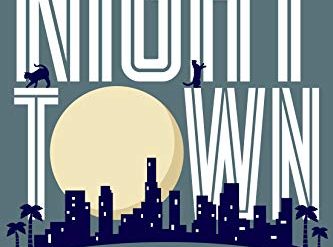
Estimated reading time: 7 minutes
Marion Stone is a general surgeon at a charity hospital in New York City, and this is his story. It’s a story of war, revolution, and painful separations, but equally a tale of compassion, love, and the power of life-saving surgery. Born of Indian parents and raised in Addis Ababa, Ethiopia, Marion now practices the skills he learned from his adoptive parents. Both are physicians, as is his father, a world-class surgeon who abandoned him at birth. Marion has become an American. but unwillingly so. Because the betrayal of the woman he loved had forced him to leave Ethiopia. This is Cutting for Stone by Abraham Verghese, a story of surgery in action. It’s a novel of exceptional power and beauty.
Six principal characters
Cutting for Stone sprawls across a half-century in nearly 700 pages. It’s filled with memorable characters. But the principal figures are these:
- Marion Stone, born conjoined with his identical twin, Shiva. Shiva is the more talented of the two. He’s a mathematical prodigy with an eidetic memory. Later in life, Shiva will become the world’s leading fistula surgeon (see below for details about fistula).
- Sister Mary Joseph Praise, a Carmelite nun from India who has become a surgical nurse at Mission Hospital in Addis Ababa (called Missing Hospital by local people). Having hidden her pregnancy for months, she dies giving birth to the twins.
- The boys’ father, Thomas Stone, is the country’s leading surgeon. When Sister Mary Joseph Praise dies, he flees Ethiopia, refusing to look at the boys.
- Obstetrician Kalpana Hemlatha (Hema) and internal medical practitioner (later general surgeon) Abhi Ghosh together raise the twins, falling in love in the process.
- Genet, the daughter of a domestic helper at the hospital, is born around the same time as the boys. The two doctors help raise her alongside them.
Two coups d’état and civil war will upend the lives of all six of these extraordinary people. This is a story not to be missed.
Cutting for Stone by Abraham Verghese (2009) 667 pages ★★★★★

About the novel’s setting
Although the story dips into scenes in India and concludes in the United States, the action takes place largely in Ethiopia. And, lest the reader make the mistake of supposing Ethiopia to be just another African nation, it makes sense to learn a little about its unique history and exceptional place in the African context.
A country of unique characteristics
Ethiopia was the birthplace of modern humans. It’s our ancestral homeland in the truest sense. And its documented history reaches back 5,000 years. The country is landlocked, located in the Horn of Africa opposite the Arabian Peninsula. Although that region is predominantly Muslim, Ethiopia is different. There, Christianity is the dominant faith counting two-thirds of the people as its adherents. Most are Ethiopian Orthodox (formerly Coptic). Others practice Pentecostal Protestantism or Roman Catholicism. Fewer than a third of the country’s people are Muslim.
A long and exceptional history
Today Ethiopia is a nation of 137 million people, Africa’s second largest country by population. According to the World Bank, it’s “one of the fastest-growing economies in the region.” It was the only African nation never colonized by Europeans before Benito Mussolini invaded it in 1936. (Mussolini’s legions were gone six years later.) Emperor Haile Selassie (1892-1975) ruled the country from 1930 to 1974 (excepting the years of the Italian occupation). He traced his lineage to the son of King Solomon and the Queen of Sheba.
War and turmoil in recent years
Selassie had a towering international reputation and spoke as an equal with the leading statesmen of his day. He was deposed in 1982 in a coup d’etat and died the following year, apparently assassinated by the new military regime. Although Selassie’s rule was autocratic and often harsh, the homicidal military officers who followed him proved far more brutal. They allied with the Soviet Union, proclaiming the People’s Democratic Republic of Ethiopia. The regime lasted until 1991, when it was overthrown in turn by a constellation of revolutionary forces led by the military of the breakaway province of Tigray. In more recent years, war with the people of Tigray has continued on and off.
On a personal note
Again and again in this novel, there are references to obstetric fistula. Though little known in the United States since the 19th century, this tragic childbirth injury affects at least one million women in the poorer nations of the Global South. And one of those countries, Ethiopia, has led the way in addressing the problem surgically. There, in Addis Ababa, the pioneering Hamlin Fistula Hospital, started by two Australian surgeons, helped foster awareness of fistula to the wider world. And Abraham Verghese highlights the condition in Cutting for Stone, describing Dr. Shiva Stone as the world’s leading expert on fistula.
I became aware of the work to combat obstetric fistula nearly fifteen years ago when a California-based nonprofit, the Fistula Foundation, hired me to help them improve their fundraising program. And I’ve been involved ever since, even serving on the board for six years. Under the brilliant leadership of the Foundation’s CEO, Kate Grant, the Fistula Foundation has expanded its scope from its support for the Hamlin Hospital in Ethiopia to work with scores of other hospitals in some three dozen countries in sub-Saharan Africa and South Asia.
In 2009, the organization was tiny. Today, it’s the world’s biggest funder of the corrective fistula surgery that has saved tens of thousands of women from leading lives of despair. They suffer debilitating injuries that almost always lead their families and neighbors to shun them. As a fundraising consultant, I’ve worked with hundreds of nonprofit organizations, from the very biggest to small local ventures. And I can tell you that the Fistula Foundation is the best-managed and most effective nonprofit I’ve ever been associated with. If you’re looking for a way to make a difference in the world, check out the Fistula Foundation online today.
About the author

Abraham Verghese was born to Christian parents from Kerala, India, in 1955 in Addis Ababa, Ethiopia. He began his medical training there but continued it at Madras Medical College in India. He earned a degree as a Bachelor of Medicine from the University of Madras in 1979. Verghese emigrated to America with his parents and two brothers. Here, he entered residency in Tennessee, followed by a fellowship at Boston University School of Medicine. Later, after the publication of his first book, he also attended the Iowa Writers Workshop. To date, he has published two memoirs and two novels. Cutting for Stone was the first.
Verghese is now a professor of medicine and an administrator at Stanford University Medical School, where he has been on the faculty since 2007.
Verghese has three children, two sons by his first marriage and a third by his second marriage.
For related reading
I’ve also revised the author’s second novel, The Covenant of Water (A deeply moving tale of life, love, and loss in 20th-century India).
You might also enjoy viewing:
And you can always find my most popular reviews, and the most recent ones, on the Home Page.


























